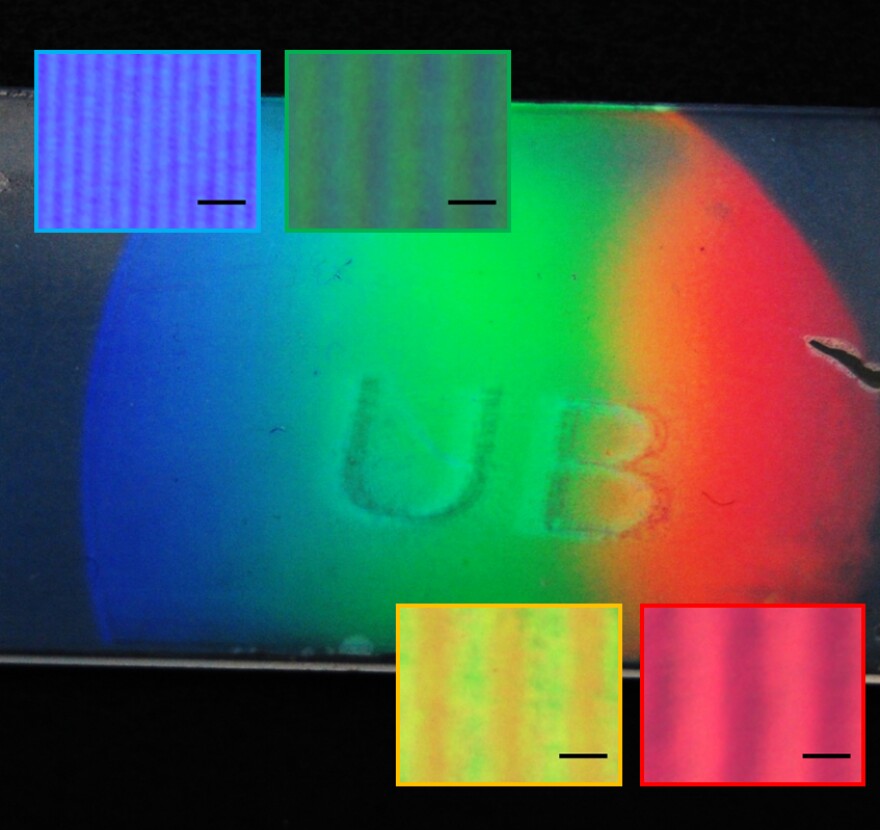Why some wounds heal quickly and others don’t baffles doctors.
Now, new research at the University at Buffalo is using special light filters to find answers.
Thin slices of plastic, known as “rainbow polymers,” reflect certain wavelengths of light. Depending on what color a polymer is designed for, researchers can employ the technology for a number of uses because it identifies an object’s “true color.”
For wounds, shades of red correlate to different proteins, some of which are more vital to a wound healing properly, which can inform doctors of needed treatment.
“It’s choreography. There’s something that’s initiated, some proteins that are produced. Those can then trigger other things. There’s a whole cascade of events,” says Alexander Cartwright, an electrical and biomedical engineering professor at SUNY Buffalo. “It’s remarkable how complicated it is. And what you’d like to understand is what proteins are the most important and which ones are present at what time.”
Vibrancy in the polymers comes from tiny gradations in the plastic.
“If you look at butterfly wings, many butterflies don’t actually have pigment. Their color comes from structure,” Cartwright says.
Because the technology can be reproduced so cheaply, Cartwright says it can improve many existing items, like clinical imaging, especially in third world countries, cameras, and even to identify the true color of paint.
Patent applications for the rainbow polymers have been filed, but Cartwright is quick to caution that the technology is still in its early stages.




